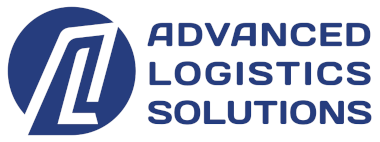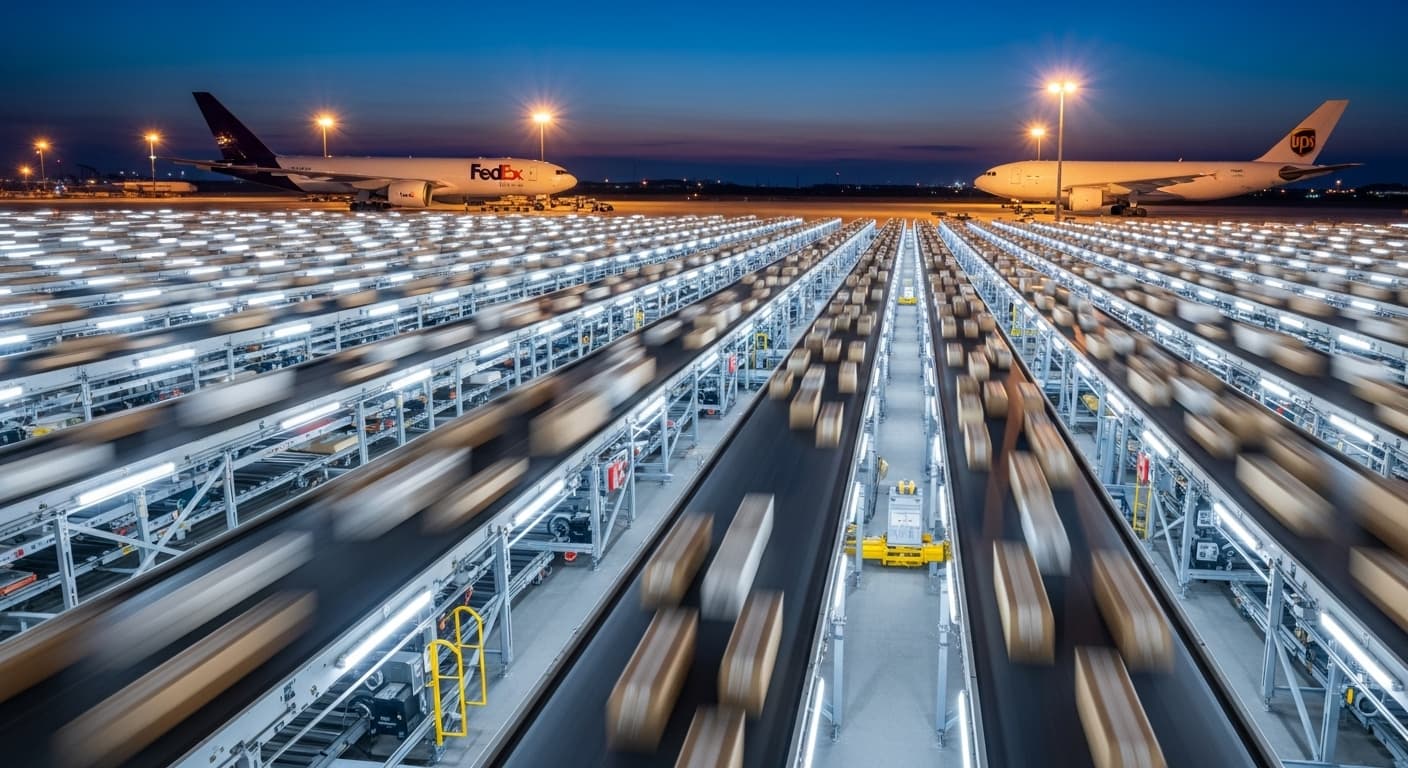
Executive Summary
The logistics industry faces an unprecedented transformation as sustainable packaging evolves from environmental compliance requirement to strategic competitive advantage. Traditional packaging approaches are being replaced by intelligent systems that simultaneously reduce costs, minimize environmental impact, and enhance customer experience. This analysis examines three critical pillars: advanced biomaterial engineering, data-driven right-sizing strategies, and circular economy integration. Organizations implementing comprehensive sustainable packaging strategies achieve 20-35% reduction in shipping costs, 25-40% decrease in carbon footprint, and enhanced brand differentiation in markets where 67% of consumers consider packaging sustainability in purchasing decisions.
The Strategic Revolution in Sustainable Packaging: Transforming Global Logistics Operations
(可持续包装的战略革命:全球物流运营的变革)
The logistics industry stands at a critical inflection point where operational efficiency converges with environmental responsibility. As global supply chains process billions of packages annually, the traditional “cardboard box and plastic filler” paradigm faces unprecedented pressure from regulatory requirements, consumer expectations, and cost optimization imperatives. This transformation represents far more than environmental compliance—it signals a fundamental shift toward intelligent packaging strategies that deliver superior operational performance while meeting sustainability objectives.
Understanding the Economic Imperative for Packaging Innovation
The movement toward sustainable packaging reflects powerful economic forces reshaping global logistics operations. Consumer purchasing decisions increasingly factor environmental credentials, with packaging serving as a visible representation of brand values. Simultaneously, dimensional weight pricing models used by major carriers create direct financial incentives for packaging optimization, while regulatory frameworks worldwide impose stricter requirements on packaging materials and waste management.
The Hidden Costs of Traditional Packaging Systems
Modern logistics operations reveal significant inefficiencies in conventional packaging approaches that extend beyond environmental concerns:
Dimensional Weight Pricing Impact: Oversized packaging directly increases shipping costs through dimensional weight calculations, where carriers charge based on package size rather than actual weight. A 12x12x12 inch box containing a smartphone incurs the same shipping cost as if it weighed 14 pounds, regardless of the actual 8-ounce product weight.
Material Waste Economics: Traditional packaging approaches often utilize 40-60% more material than necessary for product protection, representing direct cost increases in both material procurement and waste disposal fees. These costs compound across millions of packages annually.
Customer Experience Degradation: Research indicates that 73% of consumers report negative brand perception when receiving over-packaged products, directly impacting customer retention and lifetime value metrics that far exceed packaging cost savings.
Advanced Materials Engineering: The Foundation of Next-Generation Packaging
The development of innovative packaging materials represents the most significant technological advancement in logistics packaging since the adoption of corrugated cardboard. These materials deliver enhanced protection characteristics while providing superior environmental performance.
Biomaterial Innovation in Industrial Applications
Mycelium-Based Protective Packaging: Engineered from agricultural waste and mushroom root systems, mycelium packaging provides protective characteristics comparable to expanded polystyrene while offering complete home compostability. Manufacturing costs have decreased 35% since 2023, making this material cost-competitive for protective packaging applications.
Marine-Derived Packaging Solutions: Seaweed and algae-based materials offer rapid renewability and biodegradability advantages. Advanced processing techniques now enable production of flexible films with barrier properties suitable for food packaging applications, with some formulations offering edible characteristics for specialized applications.
Advanced Cellulose Technologies: Next-generation molded pulp applications extend beyond traditional egg carton materials to provide custom-fit protective inserts for electronics and fragile goods. Modern molded pulp can achieve protective characteristics matching foam materials while maintaining 100% recyclability.
Performance-Optimized Sustainable Alternatives
Corrugated Air Cushioning Systems: Paper-based bubble wrap alternatives now deliver cushioning performance within 5% of traditional plastic systems while maintaining complete recyclability. These systems integrate seamlessly with existing packaging equipment, reducing implementation barriers.
Recycled Content Integration: High-performance films incorporating 85% post-consumer recycled content provide material property characteristics comparable to virgin plastics while reducing environmental impact and often delivering cost advantages through material sourcing optimization.
Data-Driven Right-Sizing: Precision Engineering for Package Optimization
The implementation of sophisticated right-sizing strategies represents the highest-impact opportunity for immediate cost reduction and environmental improvement in packaging operations. This approach applies engineering principles and data analytics to optimize package dimensions for each unique product configuration.
Algorithmic Package Selection Systems
Modern right-sizing systems utilize sophisticated algorithms that analyze multiple variables simultaneously:
Product Dimensional Analysis: Advanced measurement systems capture precise product dimensions, weight distribution, and fragility characteristics to determine optimal packaging requirements. These systems account for irregular shapes and multi-item shipments with complex stacking requirements.
Protective Requirement Calculations: Machine learning algorithms assess historical damage rates, transportation modes, and handling characteristics to determine minimum protective packaging requirements while maintaining quality standards.
Cost Optimization Modeling: Real-time cost calculations incorporate current shipping rates, material costs, and handling fees to select the most cost-effective packaging solution for each shipment.
Quantifiable Impact of Right-Sizing Implementation
Organizations implementing comprehensive right-sizing programs typically achieve measurable improvements across multiple performance metrics:
Material Cost Reduction: 15-25% reduction in packaging material costs through elimination of excess materials and optimized package selection.
Shipping Cost Optimization: 20-35% reduction in dimensional weight charges through precise package sizing that minimizes wasted space while maintaining protection standards.
Operational Efficiency Gains: 30-40% improvement in warehouse storage density and transportation efficiency through optimized package configurations that maximize container and vehicle utilization.
Carbon Footprint Reduction: 25-40% reduction in transportation-related emissions through improved vehicle utilization and reduced material consumption.
Circular Economy Integration: Designing for Continuous Value Creation
The transition toward circular economy principles in packaging design represents a fundamental shift from linear “take-make-dispose” models to regenerative systems that maintain material value throughout multiple lifecycle iterations.
Reusable Packaging Infrastructure Development
Industrial Reusable Container Systems: Advanced container designs enable multiple use cycles while maintaining protective characteristics and tracking capabilities. Modern reusable containers incorporate RFID tracking, tamper-evident features, and modular designs that adapt to varying product configurations.
Collection and Processing Networks: Successful reusable packaging programs require sophisticated reverse logistics networks that efficiently collect, clean, inspect, and redistribute containers. Leading programs achieve 95% collection rates through integrated tracking systems and customer incentive programs.
Economic Performance of Reusable Systems: Organizations implementing reusable packaging systems typically achieve cost neutrality after 12-18 months, with subsequent operations delivering 20-30% cost advantages compared to single-use alternatives.
Technology-Enhanced Circular Design
Smart Packaging Integration: QR codes, NFC chips, and RFID tags transform packaging into interactive platforms that provide recycling instructions, product information, and supply chain transparency. These technologies enable automated sorting systems and consumer engagement programs that improve recycling rates.
Dissolvable and Biodegradable Systems: Water-soluble packaging materials enable complete elimination of packaging waste in appropriate applications. Advanced formulations provide protection characteristics suitable for various product categories while dissolving completely in standard water treatment systems.
Blockchain-Enabled Traceability: Distributed ledger technologies provide complete packaging lifecycle visibility, enabling verification of recycling claims and optimization of circular economy programs through data-driven decision making.
Implementation Strategy Framework for Sustainable Packaging Transformation
Successful transition to sustainable packaging systems requires systematic implementation approaches that address technical, operational, and financial considerations while maintaining service quality and cost competitiveness.
Phased Implementation Methodology
Assessment and Planning Phase: Comprehensive analysis of current packaging performance, cost structures, and improvement opportunities provides the foundation for strategic planning. This analysis includes detailed examination of product protection requirements, shipping characteristics, and customer preferences.
Pilot Program Development: Limited-scope implementation enables validation of new materials and processes while minimizing operational disruption. Successful pilot programs typically focus on specific product categories or geographic regions to enable controlled evaluation of performance characteristics.
Scaled Implementation: Systematic expansion of proven sustainable packaging solutions across broader operations requires careful change management and performance monitoring to ensure continued service quality and cost effectiveness.
Continuous Optimization: Ongoing refinement of packaging strategies through data analysis and technology advancement ensures continued improvement in environmental performance and operational efficiency.
Performance Measurement and Optimization
Comprehensive Metrics Framework: Successful sustainable packaging programs require measurement systems that capture environmental impact, cost performance, and service quality metrics. Key performance indicators include material usage efficiency, packaging cost per shipment, damage rates, and customer satisfaction scores.
Cost-Benefit Analysis: Detailed financial modeling enables optimization of sustainable packaging investments through analysis of material costs, operational impacts, and long-term value creation. This analysis includes consideration of regulatory compliance costs and brand value enhancement.
Stakeholder Engagement: Effective implementation requires coordination across multiple stakeholders including suppliers, customers, regulatory agencies, and service providers. Clear communication strategies and change management processes ensure successful adoption of new packaging approaches.
Strategic Competitive Advantages of Sustainable Packaging Leadership
Organizations that successfully implement comprehensive sustainable packaging strategies achieve significant competitive advantages that extend beyond cost savings and environmental compliance.
Brand Differentiation and Market Positioning
Consumer Preference Alignment: Research indicates that 67% of consumers consider packaging sustainability in purchasing decisions, with willingness to pay premium pricing for environmentally responsible products. This preference creates direct revenue opportunities for organizations with superior sustainable packaging strategies.
B2B Customer Requirements: Corporate customers increasingly require suppliers to demonstrate environmental responsibility through measurable sustainability metrics. Sustainable packaging capabilities become qualifying criteria for major contract opportunities.
Regulatory Compliance Leadership: Proactive adoption of sustainable packaging positions organizations advantageously for evolving regulatory requirements while avoiding compliance costs and operational disruptions.
Operational Excellence and Cost Leadership
Supply Chain Resilience: Diversified material sourcing and circular economy approaches reduce dependency on volatile raw material markets while providing greater supply chain stability.
Innovation Catalyst Effects: Sustainable packaging initiatives often drive broader operational improvements through enhanced process efficiency, waste reduction, and technology adoption that deliver benefits beyond packaging operations.
Total Cost of Ownership Optimization: Comprehensive analysis of packaging costs including material, transportation, handling, and disposal expenses reveals significant cost optimization opportunities that traditional cost accounting methods often overlook.
Technology Integration and Automation Opportunities
The convergence of sustainable packaging with advanced technologies creates opportunities for enhanced operational efficiency and improved environmental performance through automation and data-driven optimization.
Automated Packaging Systems
Dynamic Package Creation: On-demand packaging systems create custom-sized packages for each order, eliminating standard box inventory while optimizing material usage. These systems achieve 95% space utilization efficiency while reducing material consumption by 40% compared to traditional approaches.
Intelligent Material Selection: Automated systems select optimal packaging materials based on product characteristics, shipping requirements, and sustainability objectives. Machine learning algorithms continuously improve material selection through analysis of performance data and cost optimization opportunities.
Quality Control Integration: Automated inspection systems verify packaging integrity and sustainability compliance while maintaining high-speed processing capabilities. These systems detect packaging defects and material inconsistencies that could compromise product protection or environmental performance.
Data Analytics and Optimization
Predictive Maintenance: Analytics platforms monitor packaging equipment performance and predict maintenance requirements to minimize operational disruptions and optimize system performance.
Supply Chain Optimization: Advanced analytics optimize packaging material sourcing and inventory management while considering sustainability criteria and cost objectives. These systems balance material performance requirements with environmental impact and supply chain reliability.
Customer Preference Learning: Machine learning systems analyze customer feedback and preference patterns to optimize packaging decisions for enhanced customer satisfaction while maintaining sustainability objectives.
Future Outlook: Emerging Trends and Strategic Preparations
The sustainable packaging landscape continues evolving rapidly, with emerging technologies and changing market conditions creating new opportunities and challenges for logistics operations.
Emerging Technology Applications
Nanotechnology Integration: Advanced nanomaterials enable development of packaging with enhanced barrier properties and reduced material usage while maintaining biodegradability characteristics. These materials offer potential for significant performance improvements in specialized applications.
3D Printing Applications: Additive manufacturing technologies enable on-demand production of custom packaging components using sustainable materials. This approach eliminates inventory requirements while enabling precise customization for unique product configurations.
Artificial Intelligence Optimization: AI systems optimize packaging decisions through real-time analysis of multiple variables including cost, environmental impact, protection requirements, and customer preferences. These systems enable dynamic optimization that adapts to changing conditions and requirements.
Regulatory Evolution and Market Dynamics
Extended Producer Responsibility: Expanding EPR regulations require manufacturers and logistics providers to assume responsibility for packaging lifecycle management, creating incentives for sustainable packaging design and circular economy implementation.
Carbon Pricing Integration: Emerging carbon pricing mechanisms create direct financial incentives for packaging approaches that minimize greenhouse gas emissions throughout the lifecycle.
International Harmonization: Standardization of sustainable packaging requirements across international markets simplifies compliance while creating opportunities for global optimization of packaging strategies.
Strategic Recommendations for Implementation Success
Organizations seeking to capitalize on sustainable packaging opportunities should focus on systematic approaches that balance environmental objectives with operational efficiency and cost competitiveness.
Foundation Building
Comprehensive Assessment: Detailed analysis of current packaging performance provides the baseline for improvement initiatives and enables identification of highest-impact opportunities for sustainable packaging implementation.
Stakeholder Alignment: Clear communication of sustainable packaging strategies and benefits ensures support from leadership, customers, and operational teams while facilitating successful implementation.
Technology Infrastructure: Investment in appropriate technology platforms enables efficient management of complex sustainable packaging requirements while maintaining operational efficiency and cost control.
Execution Excellence
Pilot Program Focus: Concentrated implementation in specific areas enables validation of sustainable packaging approaches while building organizational capability and confidence for broader deployment.
Performance Monitoring: Comprehensive measurement systems track progress toward sustainability objectives while ensuring maintenance of service quality and cost competitiveness.
Continuous Improvement: Systematic refinement of sustainable packaging strategies through data analysis and stakeholder feedback ensures ongoing optimization and adaptation to changing requirements.
Conclusion: Packaging as Strategic Infrastructure
The transformation of packaging from a necessary utility to strategic infrastructure represents one of the most significant opportunities in modern logistics operations. Organizations that recognize packaging as a critical component of operational efficiency, customer experience, and environmental responsibility position themselves for sustained competitive advantage in evolving markets.
Success requires moving beyond compliance-driven approaches toward comprehensive strategies that integrate sustainable packaging with broader operational excellence initiatives. This integration delivers superior performance across multiple dimensions while creating resilient operations capable of adapting to changing market conditions and regulatory requirements.
The future belongs to organizations that view sustainable packaging not as a cost center but as an investment in operational excellence, customer satisfaction, and long-term competitiveness. By embracing this strategic perspective, logistics providers can transform packaging from a hidden cost into a visible differentiator that drives customer preference and operational performance.
The revolution in sustainable packaging has begun. Organizations that lead this transformation will shape the future of global logistics while capturing the significant economic and competitive advantages that await early adopters of comprehensive sustainable packaging strategies.

